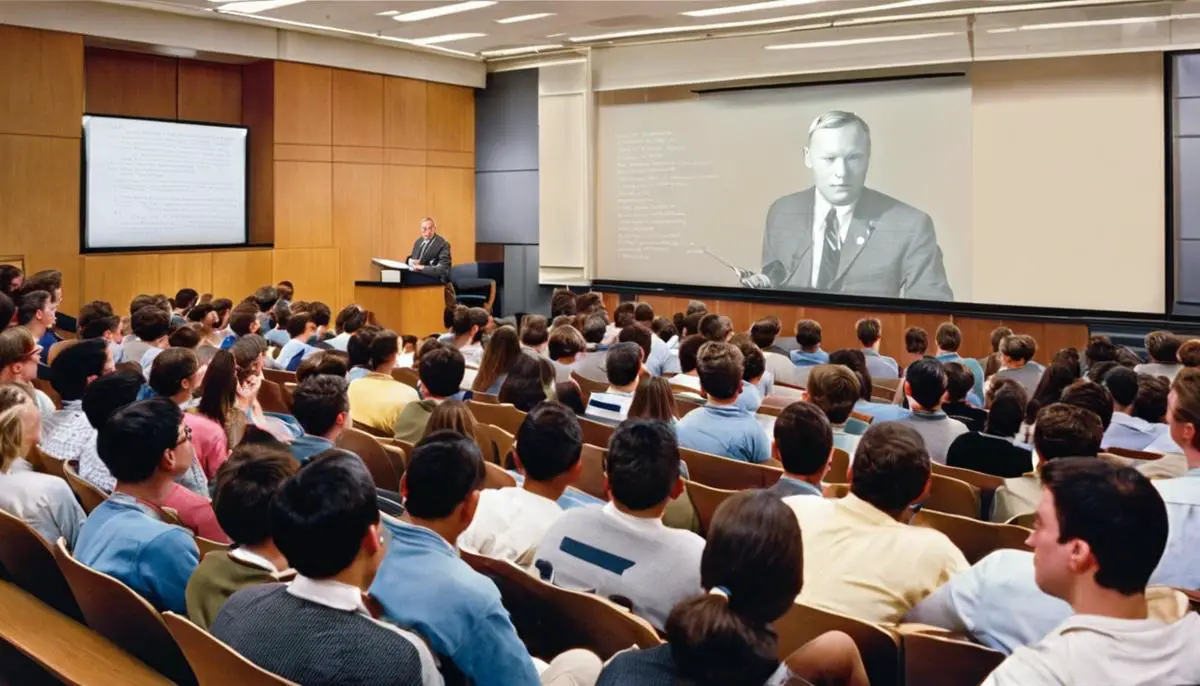When the Apollo 11 mission etched its legacy on the surface of the moon and in the annals of human achievement, its trio of astronauts—Neil Armstrong, Buzz Aldrin, and Michael Collins—catapulted into a fame that transcended their celestial journey. Yet, the most intriguing chapters of their lives unfolded as they stepped back onto Earth’s soil and ventured beyond their NASA space suits. This examination offers a glimpse into their post-mission careers, revealing how these pioneers wove their lunar experience into the fabric of academia, advocacy, culture, and industry. As we follow their trajectories from the moon’s tranquil Sea of Tranquility to the dynamic spheres of influence they charted, we uncover a tale of enduring impact and perpetual inspiration.
Contents
Neil Armstrong’s Post-Apollo Career
Post-Apollo: Neil Armstrong’s Scientific and Educational Endeavors Following His Lunar Legacy
The career trajectory of astronaut Neil Armstrong, following his historic lunar landing on July 20, 1969, serves as a paragon for the integration of experiential wisdom into the domains of academia, public service, and private sector innovation. As the commander of Apollo 11, Armstrong’s name is indelibly inscribed in history as the first human to set foot on the Moon; this extraordinary achievement was not, however, the zenith of his professional journey but a prelude to a multifaceted career dedicated to the advancement of aeronautics and astronautics.
Post-Apollo, Armstrong’s professional endeavors reflected a shift from active space exploration to a more pedagogic and advisory role. In 1970, Armstrong was appointed Deputy Associate Administrator for Aeronautics at NASA’s Office of Advanced Research and Technology. This role, albeit brief, allowed him to advocate for and direct innovative research in aeronautics. Armstrong’s technical rigor and experience piloting the Lunar Module Eagle provided him with a unique perspective on the future of flight technology.
Subsequently, the lunar pioneer transitioned into academia. Armstrong joined the faculty of the University of Cincinnati in 1971 as a professor of Aerospace Engineering. Over eight years, his contributions in the academic realm were substantial, as he shared not only his firsthand experiences in spaceflight but also his extensive knowledge of engineering principles, which were foundational for the burgeoning fields of aerospace studies and engineering education.
During his tenure, Armstrong was adamant about the necessity for comprehensive education that integrated theory with practical applications. His contribution to academia exemplified the synthesis of hands-on experience and scholarly rigour, fostering a new generation of engineers who would approach problem-solving with a balanced perspective.
As the 1970s progressed, Armstrong continued to serve on various committees and boards that influenced national policies on space, aeronautics, and technology. Notably, he was a part of the Rogers Commission, which investigated the Challenger disaster in 1986, applying his experience and critical insights to determine the root causes of the tragedy and recommend measures to prevent future incidents.
Parallel to his educational and advisory roles, Armstrong’s expertise made him an invaluable asset to private enterprise. He entered the corporate sphere, holding positions on the boards of several companies, including Marathon Oil Company and Taft Broadcasting. In these capacities, Armstrong championed technological innovation and the adoption of pioneering practices.
The subsequent professional chapter for Armstrong was one characterized by a judicious selection of endorsements and limited public appearances, in which he was frequently solicited for his perceptive views on the future of space exploration. His status as an advocate for engineering and a role model in scientific exploration endured throughout the later years of his life.
In unveiling the profound footprint left by Neil Armstrong in the post-Apollo era, one uncovers a legacy marked not by the cessation of achievement at the time of the Moon landing, but rather by the continuous pursuit of knowledge and the propagation of that knowledge across multiple facets of society. This legacy is a testament to the enduring value of experience, the power of education, and the relentless spirit of discovery that defines the heart of scientific exploration. It is within this context that Armstrong’s post-Apollo contributions can be fully appreciated as invaluable to the progression of aerospace science and its related disciplines.
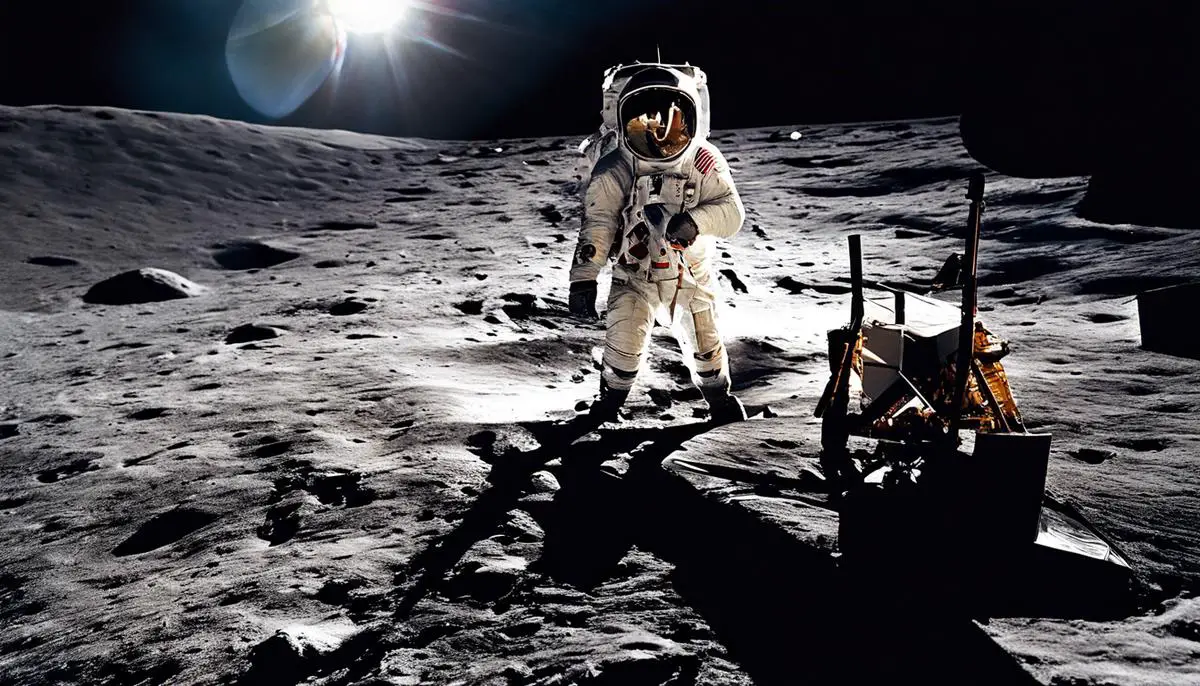
Buzz Aldrin’s Advocacy and Educational Pursuits
The Traversing Influence of Buzz Aldrin on Space Policy and Education Post-Apollo 11
Upon contemplation of the lunar missions’ enduring impact, Buzz Aldrin’s extensive contribution to the proliferation of space policy and education is conspicuous and merits diligent examination. After etching his footsteps on the lunar surface as a member of the historic Apollo 11 mission, Aldrin’s post-mission trajectory became an exemplar of how an individual could considerably influence the spheres of public engagement, policy-making, and educational initiatives in the context of space exploration.
After his return to Earth, Aldrin evolved into a formidable proponent for space advocacy. His relentless push for a manned mission to Mars ignited public discourse and shaped the narrative around our next extraterrestrial venture. Aldrin’s mars-centric vision catalyzed a reevaluation of national priorities, redirecting focus towards Mars exploration among space policy formulators. The “Aldrin Mars Cycler,” a spacecraft system envisaged by Aldrin, stands testament to his profound commitment to and influence on prolonged space habitation and interplanetary transport system designs.
Moreover, Aldrin took valiant efforts in reconceptualizing space policy and exploration strategies. He collaborated with legislators, contributing his expertise to shape the U.S. space program through testimonies before Congress. His forward-thinking approach to space and his ability to articulate the finer nuances of interstellar pursuit garnered attention from policymakers who affect national space agendas.
In parallel to his policy efforts, Aldrin’s engagement with education construed an enduring legacy. He co-founded the ShareSpace Foundation, an organization passionately dedicated to igniting the flames of curiosity and passion for space science in young minds. His advocacy for Science, Technology, Engineering, Arts, and Mathematics (STEAM) education initiatives, particularly with a focus on hands-on learning experiences, advanced the pedagogical methods employed in space science education.
Aldrin’s prolific authorship of books and articles provided a wellspring of knowledge, broadening the public’s understanding of space endeavor complexities. His literary works resonated with educators, forming part of curricula and thereby galvanizing future generations to pursue careers in aerospace fields.
Additionally, the advent of scholarship programs and exhibits bearing his name enhanced access to space education and immortalized his dedication to advancing human knowledge of the cosmos. His pivotal role in shaping the Aldrin Space Institute at the Florida Institute of Technology, an institute intent on fostering international collaboration for space exploration, underscores the seminal nature of his contributions to academia and the industry’s collective intelligence.
In conclusion, Aldrin’s influence permeates the fabric of space policy formation, imparts wisdom across educational landscapes, and breathes inspiration into the aspirations and dreams of burgeoning space enthusiasts. His endeavors post-Apollo 11 have irrevocably fortified the trajectory of space exploration and education, crafting a legacy that not only shadows the past but also illuminates pathways for the celestial journeys ahead.
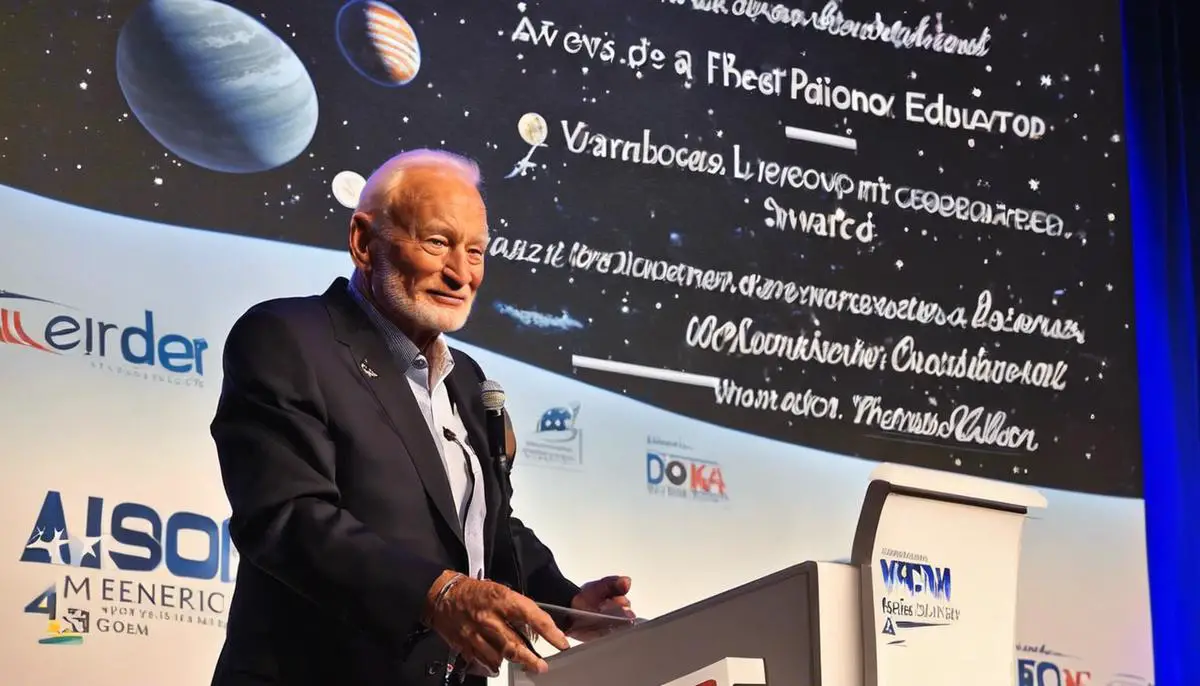
Michael Collins’ Role in Government and Museums
Michael Collins, the often-underrated third member of the historic Apollo 11 mission, undertook a multifaceted professional trajectory following his pivotal role in humanity’s maiden lunar landing. After orbiting the Moon in the command module Columbia while his colleagues, Armstrong and Aldrin, descended to the lunar surface, Collins returned to Earth and was thrust into a world profoundly changed by his crew’s achievements.
Upon his repatriation to terrestrial life, Collins continued his commitment to the National Aeronautics and Space Administration (NASA). He served as the Assistant Secretary of State for Public Affairs for a brief period before taking on a more substantial role as the Director of the National Air and Space Museum (NASM). His leadership was instrumental in the museum’s development, turning it into an educational and cultural powerhouse that opened its doors to the public on July 1, 1976. Collins’s passion for the dissemination of aerospace knowledge and the inspiration of future generations was manifested in the exhibits that illuminated the past, present, and aspirations of air and space flight.
Moreover, his tenure at NASM witnessed the birth of the Space Shuttle Enterprise, which further solidified the museum’s pivotal role in chronicling the epoch of space exploration. Beyond his administrative capabilities, Collins displayed a pronounced aptitude for communication, penning books such as “Carrying the Fire,” an introspective memoir of his experiences as an astronaut that remains celebrated for its literary quality and honest reflection.
As a testament to his commitment to public awareness and education in the field of aerospace, Collins contributed to the founding of the Smithsonian Institution’s National Air and Space Museum’s Center for Earth and Planetary Studies, which promotes the exploration and study of planetary science and terrestrial geology, effectively bridging his expertise in spaceflight with research on Earth’s own celestial foundations.
After a prolific stint at the helm of NASM, Collins ventured into the private sector, assuming a leadership role at the helm of the aerospace firm, LTV Aerospace. This position highlighted the symbiosis between governmental space endeavors and the private sector’s development, showcasing Collins’s insight into the infrastructure necessary to propel the aerospace industry forward.
Notwithstanding his professional endeavors, Collins’s involvement in policy was notable. His experiences as an astronaut rendered him an authoritative voice in matters of aeronautics and space. This acknowledgment was demonstrated by his role in advising under the administration of President Ronald Reagan and his participation in the National Space Council, where he contributed his expertise on space-related issues.
Furthermore, Michael Collins’s legacy extends to cultural institutions, as his insights into human spaceflight have become integral to our understanding of this extraordinary aspect of human endeavor. His public speeches and writings continue to inspire and advocate for the importance of space exploration, and his perspectives on the cultural significance of space travels resonate to this day.
Conclusively, Collins’s post-NASA life was replete with leadership, innovation, and dedication to advancing the public’s understanding of, and engagement with, aerospace endeavors. His multifarious roles demonstrate a lifelong commitment to fostering an environment in which space exploration is appreciated not only as scientific achievement but as a cultural and educational pillar for future generations.
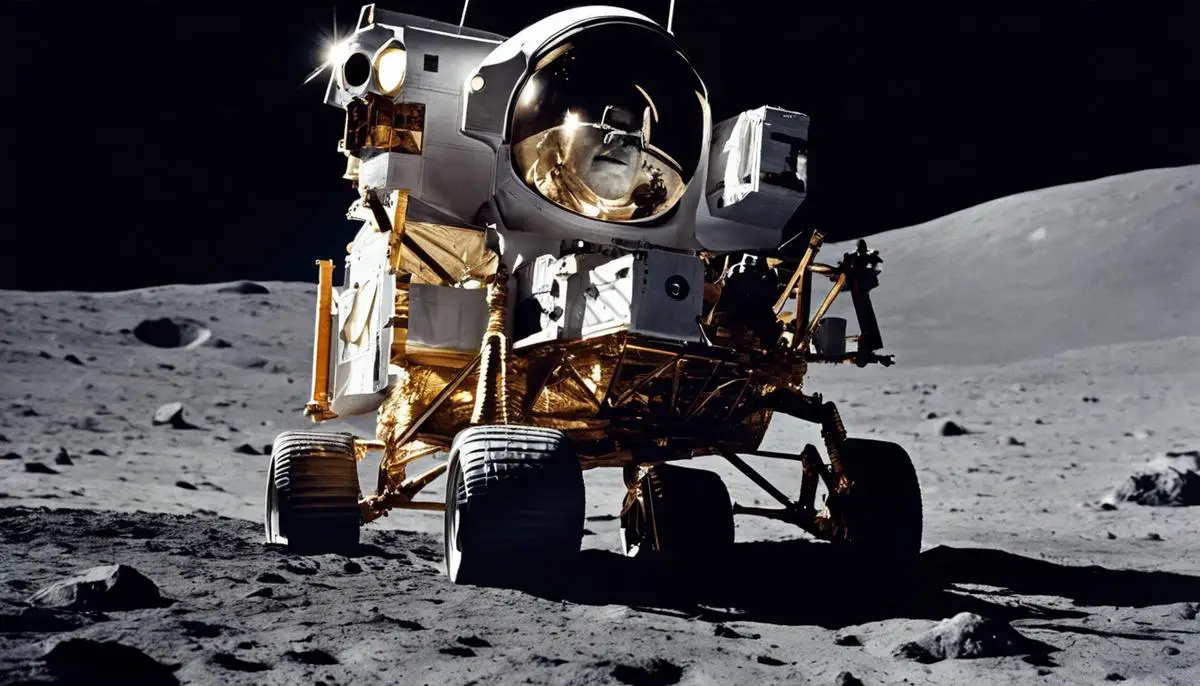
Commercial and Technical Contributions
Michael Collins played a crucial role in the historic Apollo 11 mission, not as a lunar walker, but as the command module pilot, orbiting the moon and ensuring the safe return of his colleagues and the lunar craft. His role, although less glorified, was pivotal to the mission’s success and exemplifies the collaborative nature of space exploration.
Collins’ illustrious career did not end upon his return to Earth. His dedication to the National Aeronautics and Space Administration (NASA) continued. He took part in efforts to enhance the agency’s approach to space exploration, leveraging his experience to benefit upcoming programs and foster advancements in human spaceflight strategies.
As the Director of the National Air and Space Museum, Collins played an instrumental part in shaping the communication and public engagement of space science. Under his guidance, the museum did not only exhibit artifacts but also served as an educational beacon, igniting interest and enthusiasm in the aerospace sector among museum visitors.
The development of the Space Shuttle Program witnessed Collins’ direct influence. His insights into the Space Shuttle Enterprise were invaluable for shaping NASA’s reusable spacecraft technology, marking a significant shift from the one-time-use rockets of the Apollo era to a more sustainable approach to human space endeavors.
Collins was not only an instrumental figure in practice but also an articulate communicator of the intricacies and wonders of space exploration. His book “Carrying the Fire” is widely acclaimed for its candid and introspective look at the experiences of an astronaut. His literary contributions further served to bridge the gap between the scientific community and the public, enhancing general interest in space science and promoting a more profound appreciation for the exploration of the cosmos.
In founding the Center for Earth and Planetary Studies, Collins underscored the importance of interdisciplinary research in understanding planetary bodies in relation to Earth. This initiative burgeoned into a nexus of academic inquiry that not only focuses on space science but also on the broader implications of such research for understanding our home planet.
His executive tenure at LTV Aerospace further exemplifies the seamless intersection between space technology and commercial practice, marking a transition wherein aerospace advancements began to have broader commercial applications.
Collins’ tenure in policy and advisory roles contributed to the guiding frameworks of American space explorations, where governance and strategic direction are critical to the sustained commitment and investment in space programs.
Finally, Collins’ legacy transcends his contributions to cultural institutions. His perspectives on space exploration have helped to shape a societal consensus that regards space not as an abstract frontier but as an attainable, understandable, and essential field of human activity. His dedication to advancing public understanding and engagement with aerospace endeavors stands as a testament to the ripple effects that have emerged from the Apollo program, affecting not only technical fields but also cultural and educational domains.
The Apollo 11 astronauts have indelibly shaped not just space exploration’s path but have made numerous contributions to the commercial sector and technical fields, driving innovation, policy, and public engagement in ways that continue to resonate with profound impact.

Public Perception and Legacy
The profound impact of the Apollo 11 mission transcends the mere accomplishment of landing humans on the lunar surface; it inherently became a defining moment of the 20th century, indelibly shaping our collective societal aspirations and individual lives.
The astronauts associated with this historical quest took on a mythic status, emerging as eternal figures in the narrative of human progress.
The Apollo 11 crew, though bonded by a singular, spectacular event, embarked on diverse trajectories post-mission that supplemented and expanded their influence, morphing into multifaceted legacies.
These legacies manifested in myriad forms, including contributions to science and technology, education, and public discourse.
Buzz Aldrin, for example, fervently pursued the human settlement of Mars. His innovative “Aldrin Mars Cycler,” a conceptual spacecraft system, is a testament to his commitment to a sustainable human presence on Mars. Aldrin’s advocacy extended to advising policymakers, reflecting his aspirations for a comprehensive national space strategy. The establishment of the ShareSpace Foundation crystallized his commitment to disseminating space science, with a particular emphasis on STEAM education, aiming to ignite the imaginative capacities of the younger generations to emulate Apollo’s achievements.
Concomitantly, Aldrin has remained a prolific contributor to literature in the space sciences. His written works shed light on the intricate complexities and triumphs of space missions, intending to elevate public understanding of space endeavors. His name has become synonymous with educational outreach through scholarship programs and exhibitions, signifying an enduring desire to inspire determination and innovation in future aerospace pioneers.
Furthermore, the Aldrin Space Institute stands as a pillar of his enduring influence, shaping both the current space policy dialogue and propelling the vision for future extraterrestrial exploration and settlement.
Similarly, Michael Collins carved out a distinguished post-Apollo career that underscored his dedication to aerospace education and public engagement. His role as command module pilot may have relegated him to a less publicized historical footnote, comparatively, but his impact is no less significant.
As Director of the National Air and Space Museum, Collins significantly influenced the public’s engagement with and comprehension of space exploration. Under his guidance, the narratives of aerospace achievements became an integrated element of global culture. His involvement was pivotal in ushering in the era of reusable spacecraft technology, as seen through his dedication to the Space Shuttle Program.
Collins also demonstrated a unique ability to convey the grandeur and technical nuances of human spaceflight. His memoir “Carrying the Fire” is considered a canonical text, offering an unrivaled insight into the experiences of astronauts. His influence extended to the founding of the Center for Earth and Planetary Studies, which promotes interdisciplinary scholarship that is crucial to understanding our place in the cosmos.
The intersection of technical innovation and commercial practices marked another aspect of Collins’ post-Apollo life, whereby his role within LTV Aerospace highlighted the commercial sectors’ relevance to the space industry. His policy advisements and broad strategic roles ensured the continuance of an American space exploration framework that both looks back at the successes of Apollo and forward to the possibilities of the future.
Collins’ life and career, much like that of his fellow astronauts, was spent in the fervent quest to broaden the limits of human knowledge and to bring about a closer integration between society and the far-reaching endeavors of space exploration.
The indelible footprints left by the Apollo 11 astronauts on the Moon mirrored their extensive and diverse impressions upon numerous facets of human life. Beyond establishing foundational pillars in space exploration, their multifaceted endeavors have substantially contributed to the technological, educational, and cultural landscapes.
This engagement with the breadth of human enterprise articulates a broader reflection of the astronauts’ experiences – that the pursuit of space is intrinsically linked with the quest of understanding and improving life here on Earth. The personal narratives and professional undertakings of the Apollo 11 crew endure, shaping modern endeavors in space and continuing to guide humanity’s celestial ambitions.
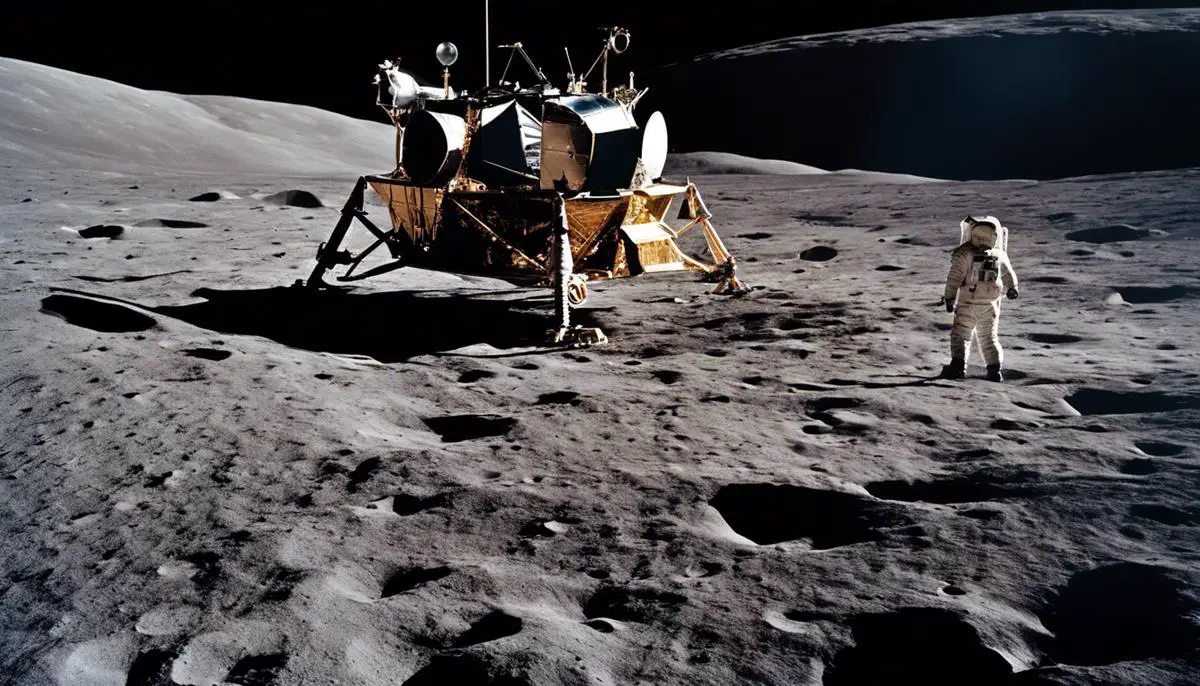
The paths charted by the Apollo 11 astronauts after their historic mission mirror the multi-faceted nature of the human spirit, driven by curiosity, duty, and the desire to share wisdom with future generations. Through their educational activities, governmental service, advocacy, and corporate influence, they collectively sculpted a post-Apollo narrative as rich and varied as the surface of the moon they once explored. As the years progress, the imprints they leave behind are not just those of boots on lunar ground, but of indelible contributions to our society, our dreams of space, and to the perpetual quest for knowledge that propels humanity into tomorrow.
